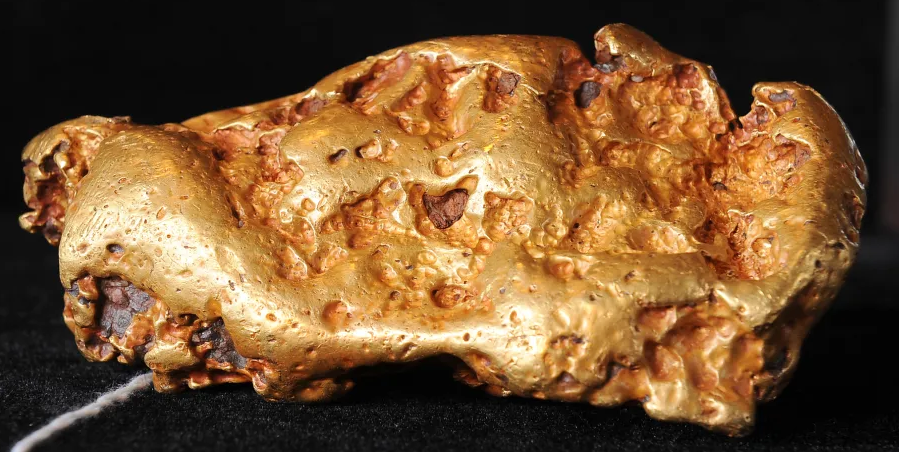There are many interesting facts about the element gold, which is listed on the periodic table as Au. Au—comes from the old Latin  name for gold, aurum, which means "shining dawn" or "glow of sunrise." The word gold comes from the Germanic languages, originating from the Proto-Germanic gulþ and Proto-Indo-European ghel, meaning "yellow/green." The Aztec word for gold, "teocuitatl," translates to "excrement of the gods." Its atomic number is 79.
name for gold, aurum, which means "shining dawn" or "glow of sunrise." The word gold comes from the Germanic languages, originating from the Proto-Germanic gulþ and Proto-Indo-European ghel, meaning "yellow/green." The Aztec word for gold, "teocuitatl," translates to "excrement of the gods." Its atomic number is 79.
A few more fun and fascinating facts about gold include:
- Gold is the most malleable element. A single ounce of gold (about 31 grams) can be stretched into a gold thread 5 miles long and beaten into a 300-square-foot sheet. A sheet of gold can be made thin enough to be transparent. You could even scratch pure gold with a fingernail.
- A karat is a unit of purity. And the karat number will determine the amount of gold in a particular piece. It is measured on a scale from eight to 24 in increments of two, with the higher number representing greater purity. However, almost nothing is pure gold or, 24 karats, with jewelry topping out at 22 karats. That’s because typically, when crafting gold jewelry, the gold must be mixed with another metal, such as copper or silver to make it usable.
- Gold is a pure element and is the only truly yellow metal on Earth. Other metals may develop a yellowish color, but only after they have oxidized or reacted with other chemicals.
- Gold has been found on all seven continents, but the first gold discovered in the United States was in 1799. A boy, Conrad Reed, found a 17-pound nugget in Cabarrus County North Carolina and used it as a door stop! This discovery happened 50 years prior to the famous California Gold Rush of 1849.
- Nearly all the gold on Earth came from meteorites that bombarded the planet over 200 million years after it formed.
- Gold’s melting point is 1,947ºF or 1,064 °C. Gold boils at 2,850°C. Small gold melting kilns are used by hobbyists.
- Olympic gold medals were pure gold until 1912. Currently, they're made up of 494 grams of silver and only 6 grams of gold.
- Fort Knox contains around 50% of the United States’ gold reserves. It has never been robbed. In fact, no one has even attempted carrying out such an operation. With 30,000 soldiers, a surrounding minefield, Predator drones doing routine surveillance, and 20-ton vault doors (which no single person has a combination to), it’s an impossible undertaking.
- Gold can be consumed in small quantities and is often added to luxury beverages and foods, but it has no known nutritional or taste value. It is considered biologically inert, which means that it can be digested without being absorbed or interacting with your body.
- If all of the world’s gold that has ever been mined were collected, it would fill three Olympic-sized swimming pools— each 164 x 82 feet x 6 feet deep— a combined 157,000 metric tons.
- Gold is the most popular precious metal for investments. The price of gold constantly fluctuates and is often linked to major economic events. Generally, the value of gold tends to move inversely to the value of the US dollar. For example, when the value of a dollar increases, the price of gold drops as it is relatively more expensive for those in other countries to purchase. The opposite is likewise true.
- Gold panning is fun for the whole family. You can even buy Alaskan paydirt and have it shipped to your home.
- Aurophobia is the fear of gold. And probably no one reading this has ever been diagnosed with that condition! Gold fever, however, is another story!